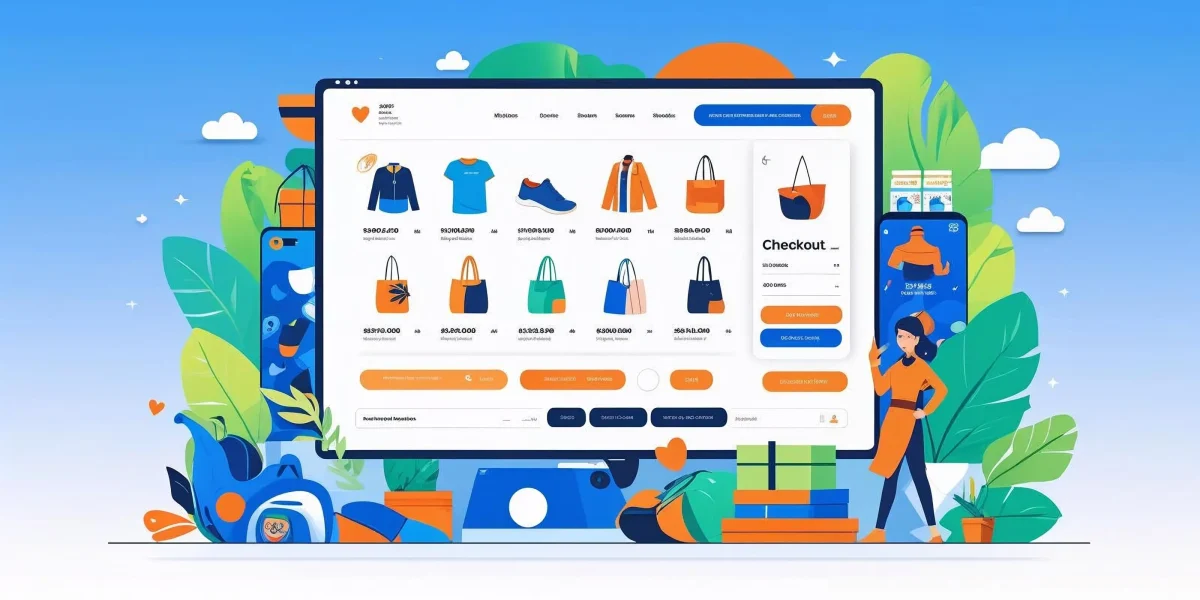Creating an online store isn’t just about listing products – it’s about designing an experience that converts. In 2025, the marriage of web design and ecommerce is more critical than ever. Shoppers expect seamless, beautiful, responsive, and fast-loading websites. And to deliver all that, choosing the best ecommerce platform is everything.
Whether you’re a freelancer building stores for clients or a small business owner launching your first product line, your ecommerce platform determines how fast you go live, how well you scale, and how flexible your site becomes in a crowded marketplace.
Let’s explore the best ecommerce platforms and how each supports your design vision.

Why Platform Choice Matters More Than Ever
Your ecommerce platform affects:
- Design Freedom: Can you shape the look and feel of every element, or are you limited to templates?
- Customer Experience: Does the platform ensure fast loading, responsive layout, and intuitive checkout?
- SEO and Marketing Tools: Can you optimize content, integrate analytics, and run campaigns effectively?
- Growth Potential: Can you scale from 10 to 10,000 products and enter new markets?
In 2025, the best ecommerce platform must support mobile shopping, localized currencies, secure payments, and deep integration with design tools.
Best Ecommerce Platforms for 2025
1. WooCommerce (WordPress)
- Open-source, highly customizable
- Full design control using themes and builders like Elementor or Kadence
- Thousands of plugin integrations
- Self-hosted flexibility and scalability
Best for: Designers, developers, marketers who need complete freedom
2. Shopify
- Hosted, beginner-friendly
- Requires theme or Liquid code customization for advanced designs
- Easy to launch but limited in SEO and content flexibility
Best for: Startups, dropshippers, and fast product launches
3. BigCommerce
- Built for large catalogs and B2B use cases
- Headless-ready for front-end flexibility
- Strong SEO features and performance at scale
Best for: Growing businesses with complex inventory needs
4. Wix Ecommerce
- Drag-and-drop builder with visual controls
- Limited backend control and integrations
- Best for creators, freelancers, and small teams
Best for: Solopreneurs or visual-first brands without heavy technical needs
Feature Comparison Table
| Feature | WooCommerce | Shopify | BigCommerce | Wix |
| Ownership | Full control | Hosted | Hosted or headless | Fully hosted |
| Design Control | Unlimited | Moderate | Flexible | Visual editor |
| Ease of Use | Moderate | High | Moderate | High |
| Custom Code Access | Yes | Limited | Yes | No |
| Cost | Free plugin + hosting | Monthly plans | Monthly plans | Monthly plans |
| SEO Capability | Excellent | Moderate | Strong | Basic |
| Best Use Case | Designers, SMEs | Startups, Dropshipping | Large catalogs | Small stores |
Designing Without Limits: Why WooCommerce Wins on Flexibility
Designers thrive on control, and WooCommerce delivers. It’s built within WordPress, giving access to every block editor, custom field, and visual design system:
- Elementor: Drag-and-drop everything
- Kadence Blocks: Lightweight, clean code
- Spectra: Extend Gutenberg with creative tools
Other platforms impose limits. Shopify’s customization often requires developer intervention. Wix is easy but lacks power. BigCommerce balances control and usability but lacks deep WordPress-style customization.
“When creativity is a priority, WooCommerce with WordPress is the most powerful design combo.”
Hosting and Scalability
- Shopify/BigCommerce: Built-in hosting, CDNs, uptime SLAs
- WooCommerce: Choose your host, scale on demand with providers like Cloudways or Kinsta
- Wix: Simple, but limited resources for scaling
If you expect growth, go with WooCommerce on cloud hosting or BigCommerce enterprise.
Integration Ecosystem
Your platform should support marketing, CRM, automation, and analytics.
- WooCommerce: Unlimited plugins (FluentCRM, MailPoet, LearnDash)
- Shopify: App store with many paid apps
- BigCommerce: Better APIs, fewer apps
- Wix: Basic tools, fewer pro integrations
Payment & Multi-Currency Features
In 2025, ecommerce is global. Customers expect to shop in their currency with payment methods they trust.
- WooCommerce: Plugins for Razorpay, Stripe, Mollie, and regional providers
- Shopify: Supports major gateways, with its own Shopify Payments
- BigCommerce: Strong native support
- Wix: Limited multi-currency capability
Security & Compliance
Security isn’t optional.
- Shopify, BigCommerce, Wix include PCI compliance, SSL, fraud tools
- WooCommerce depends on host + plugins (Wordfence, Sucuri)
- WordPress advantage: full control over data storage and GDPR compliance workflows
Case Studies: Use-Centered Comparisons
Solo Creator: A local artist uses Wix to create a fast portfolio shop. Great visuals, but lacks depth in blog SEO and multi-language support.
Startup Brand: A skincare brand grows fast on Shopify. But as SEO and storytelling become key, limitations emerge.
Retailer Scaling Up: A regional clothing company moves to BigCommerce for catalog management and global payments.
Digital Empire Builder: An affiliate-focused entrepreneur chooses WooCommerce, integrates FluentCRM and CartFlows, and builds a multilingual site.

Final Verdict: Which Platform Matches Your Vision?
The best ecommerce platform depends on your priorities:
- Ease and Speed? Go Shopify or Wix
- Design and Growth? Choose WooCommerce
- Scale and B2B? Explore BigCommerce
“Pick a platform that grows with your design ambitions – not one you outgrow.”
If you need help choosing or building on the right ecommerce foundation, our team offers free consultations. Let us guide you based on your brand, audience, and future vision.
Book Your Free Ecommerce Strategy Call
Interesting Read
Local SEO Glasgow: Be Found First, Be Chosen Fast


